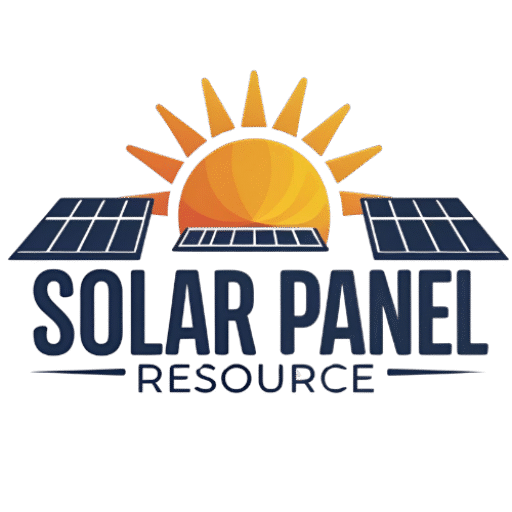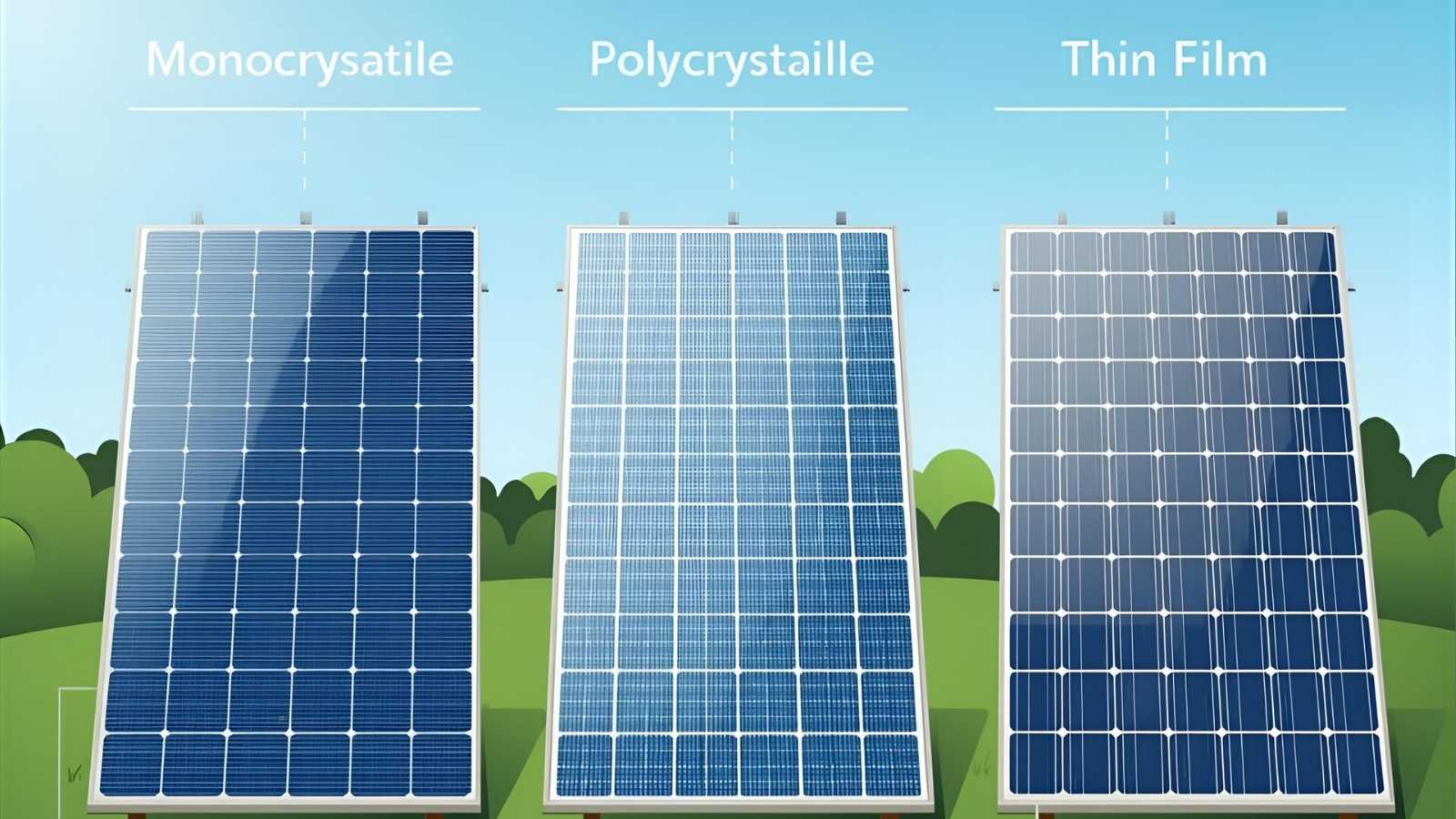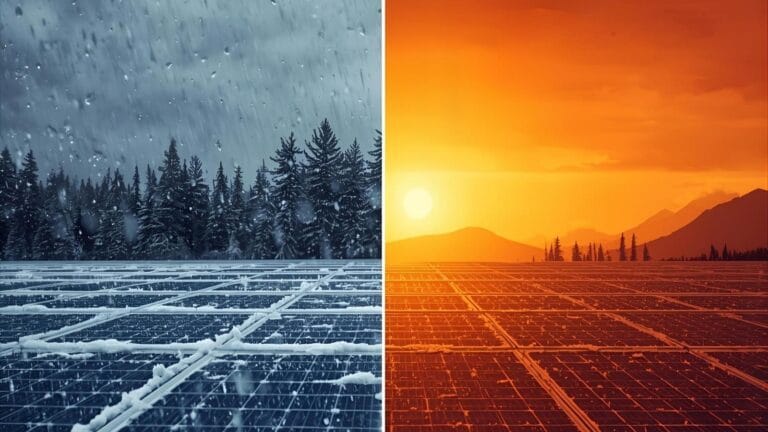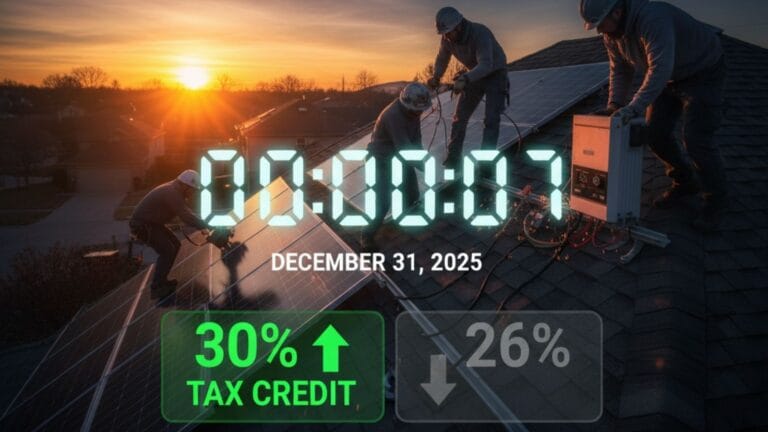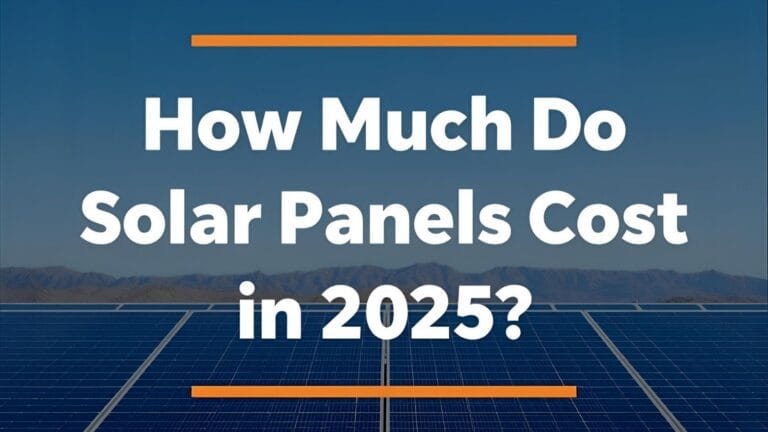Monocrystalline vs Polycrystalline vs Thin-Film: Which Solar Panel Should You Choose?
When planning to invest in solar energy, one of the most important decisions is choosing the right type of solar panel. The debate of monocrystalline vs polycrystalline vs thin-film is a common one among homeowners and businesses alike, as each technology has unique benefits, costs, and efficiencies.
As a solar energy professional with experience in both residential and commercial installations, I can confirm that the best choice is rarely a one-size-fits-all solution. Your decision should be guided by key factors such as your budget, available roof space, and local climate conditions. In this in-depth guide, we’ll compare these three panel types side by side, providing you with the expert insights needed to confidently decide which solar panel is best for your specific needs.
Understanding the Main Types of Solar Panels
Before diving into a detailed comparison, it’s crucial to understand the fundamental differences between the three major panel types. Each one is designed with a specific manufacturing process that directly impacts its performance and cost. Let’s take a look at the core characteristics of each.
Monocrystalline Solar Panels: The High-Efficiency King
Known as the premier choice in the solar industry, monocrystalline panels are easily recognizable by their uniform, dark black color and sleek appearance. They are made from a single, pure silicon crystal. This purity allows for a superior flow of electrons, making them the most efficient solar panels on the market.
- Highest Efficiency: Monocrystalline panels typically operate at an efficiency range of 18% to 22% or higher. This means they can convert more sunlight into electricity than other types, making them ideal for rooftops with limited space.
- Superior Performance: Their design ensures excellent performance, even in low-light or cloudy conditions. They consistently produce a higher energy yield per square foot.
- Long-Term Investment: While they have the highest upfront cost, their long lifespan and superior efficiency translate to greater savings and a faster return on investment over the system’s life.
Polycrystalline Solar Panels: The Cost-Effective Workhorse
Polycrystalline panels are an excellent choice for those seeking a balance between performance and price. They are made by melting multiple silicon fragments together, which results in a less pure structure compared to their monocrystalline counterparts. This process is less labor-intensive, making them more affordable. You can easily spot them by their unique blue, speckled appearance.
- Good Efficiency: While not as efficient as monocrystalline panels, they still offer a respectable efficiency range of 15% to 17%. This makes them a solid, reliable choice for many installations.
- Lower Cost: Their more straightforward manufacturing process translates directly to a lower price point, making them a popular option for large-scale projects and budget-conscious homeowners.
- Reliable Performance: They perform very well in a variety of climates and are still backed by long-term warranties, providing peace of mind for the consumer.
Thin-Film Solar Panels: The Versatile Innovator
Thin-film technology represents a completely different approach to solar energy. Instead of silicon wafers, these panels are created by depositing a thin layer of a photovoltaic material onto a substrate like glass, plastic, or metal. This unique design gives them distinct advantages that are ideal for specific applications.
- Lightweight and Flexible: The most notable feature of thin-film panels is their flexibility. This makes them perfect for non-traditional surfaces, such as curved roofs, and for portable solar applications.
- Lower Production Cost: Thin-film panels are generally the cheapest to manufacture, which can significantly lower the overall cost of a large-scale installation.
- Low-Light Performance: While their peak efficiency is lower than crystalline panels, they are known to perform exceptionally well in low-light and cloudy conditions, making them a good option for certain climates.
Which Solar Panel Type Is Best?
Which Solar Panel Is the Best Choice?
There is no single “best” solar panel type; the ideal choice is a decision based entirely on your specific circumstances. A professional solar installer would tell you that the best panel for you depends on three critical factors: your available space, your budget, and the unique characteristics of your installation site.
- For Maximum Efficiency and Limited Space: Monocrystalline panels are the clear winner. Their superior efficiency means you can generate more power from a smaller rooftop, making them the top choice for urban homes or anyone looking to maximize their energy output per square foot.
- For a Balance of Performance and Cost: Polycrystalline panels are an excellent choice. They offer a great return on investment and are a reliable solution, especially if you have ample space and are working with a more conservative budget.
- For Specialized or Unique Installations: Thin-film panels are a versatile solution. Their lightweight and flexible nature makes them ideal for unconventional surfaces—such as curved roofs on commercial buildings or portable solar applications—where traditional panels would not be a viable option.
Before making a final decision, it’s highly recommended to consult a certified solar professional who can evaluate your specific energy needs and property to provide a tailored recommendation.
Monocrystalline vs Polycrystalline vs Thin-Film – A Detailed Comparison
“For more technical data, see NREL’s official solar technology page.”
| Feature | Monocrystalline | Polycrystalline | Thin-Film |
|---|---|---|---|
| Efficiency | 18%–22% | 15%–17% | 10%–12% (varies by type) |
| Cost | Higher | Moderate | Lower |
| Durability | Excellent | Very good | Good |
| Appearance | Black | Blue | Flexible/varies |
Monocrystalline vs polycrystalline solar panels: monocrystalline tends to be more efficient and better in hot climates, while polycrystalline is more affordable.
Thin film vs monocrystalline solar panels: thin-film is lighter and cheaper but significantly less efficient. It shines in specific use cases like large roofs or nontraditional surfaces.
Which Is Better, Thin-Film or Crystalline Solar Panels?

A frequently asked question in the solar industry is: “Which is better, thin-film or crystalline solar panels?” The answer, as many experts will tell you, depends on what you value most—efficiency or versatility. While both technologies have their place, their performance and ideal applications differ significantly.
In general, **crystalline panels** (including both monocrystalline and polycrystalline types) have long been the industry standard, outperforming thin-film panels in both **efficiency and lifespan**. They convert a higher percentage of sunlight into electricity, making them the most suitable choice for projects where space is limited and maximum power output is the goal. This is a primary reason why crystalline panels dominate the residential solar market.
However, **thin-film solar panel technology** has seen significant advancements in recent years, narrowing the efficiency gap. Furthermore, it offers unique advantages that make it a compelling choice for specific projects. Thin-film panels are notably more **flexible and lightweight**, which makes them ideal for unconventional or curved surfaces where rigid crystalline panels cannot be installed. Additionally, they are less affected by partial shading and high temperatures, maintaining a more consistent performance in challenging conditions. These features make thin-film a strong and innovative option for certain commercial or specialized installations.
Types of Thin-Film Solar Panels
While the term “thin-film” is often used as a single category, it’s important to know that it encompasses several distinct technologies. Each type uses a different semiconductor material, which directly impacts its performance and ideal application. For specialized projects, understanding these subtypes is essential.
Amorphous Silicon (a-Si)
This is the oldest and most widely used thin-film technology. Amorphous silicon panels are known for being the most affordable option, largely due to their relatively simple manufacturing process. While they have a lower efficiency rate compared to other solar panel types, their flexibility and low cost have made them popular for small-scale applications and consumer electronics like solar-powered calculators.
Cadmium Telluride (CdTe)
As the second most common thin-film technology, CdTe has seen widespread adoption in large-scale, utility-level solar projects. Panels made from this material offer a higher efficiency than a-Si while maintaining a lower manufacturing cost. The technology is often praised for its ability to perform well in hot climates, as it is less affected by high temperatures than traditional silicon panels.
Copper Indium Gallium Selenide (CIGS)
CIGS is considered the most promising thin-film technology. These panels stand out for their exceptional flexibility and higher efficiency, often rivaling polycrystalline panels in performance. Their high power-to-weight ratio and ability to be integrated into building materials make them an ideal choice for a variety of advanced applications, from solar rooftops to flexible charging solutions.
A common point of confusion is the comparison of “monocrystalline vs. polycrystalline vs. amorphous.” It’s important to clarify that amorphous silicon (a-Si) is a type of thin-film. It’s often used in comparisons to highlight the trade-off between crystalline and thin-film technologies, namely the choice between the higher output of crystalline panels and the lightweight, flexible advantages of thin-film options.
What Is the Biggest Advantage of Thin-Film Solar Cells?
“Learn more about thin-film technology from SEIA’s resource center.”
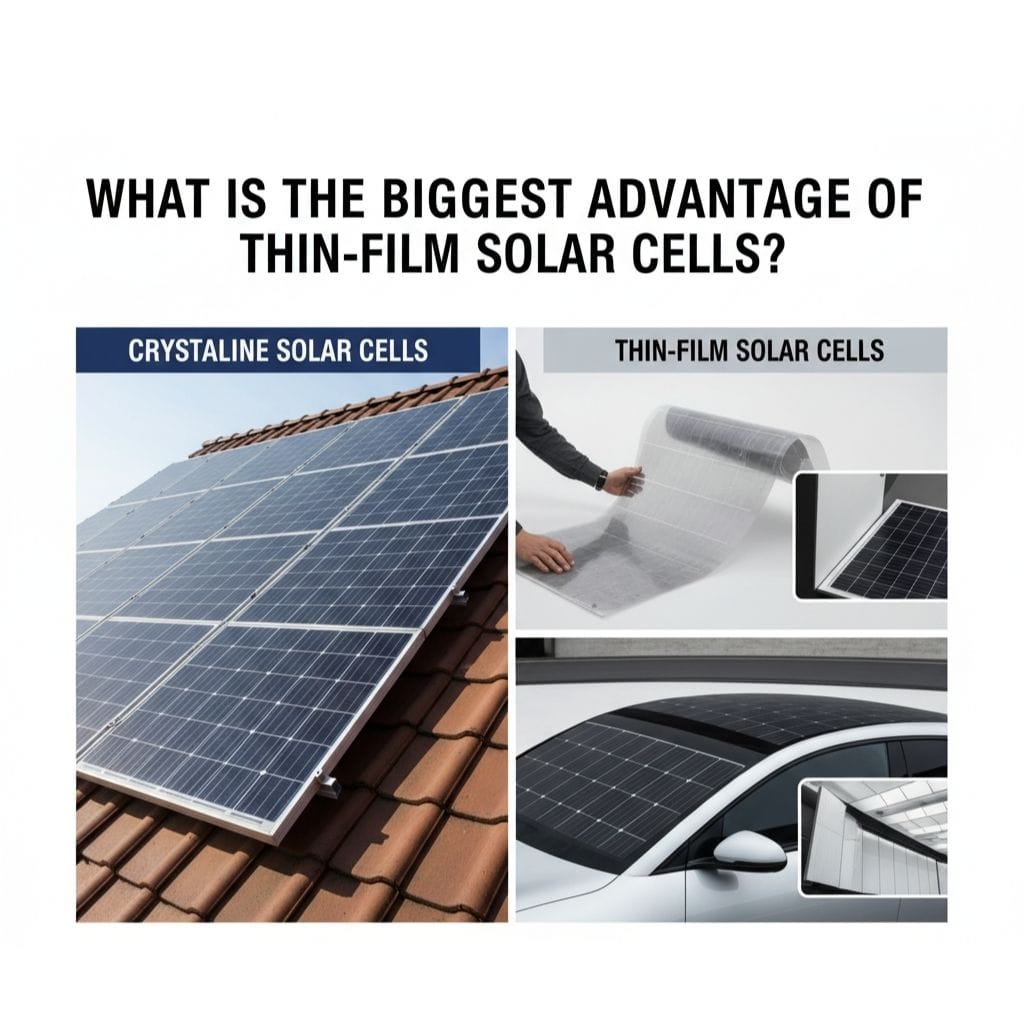
The biggest advantage of thin-film solar cells is their flexibility and adaptability. They can be applied to curved surfaces, integrated into building materials, and used in areas where traditional panels aren’t practical. For projects with large roof space and a focus on lightweight materials, thin-film panels can be cost-effective despite their lower efficiency.
Cost of Thin-Film Solar Panels vs. Crystalline Panels
When evaluating the cost of solar panels, the upfront price can be deceiving. While thin-film solar panels generally have a **lower per-watt manufacturing cost** than their crystalline counterparts, this doesn’t always translate to a cheaper final installation. The key is to look at the total project cost and long-term value, not just the price of the individual panels.
Since thin-film panels are less efficient, you will need to install a larger number of them—or cover a greater surface area—to achieve the same total energy output as a system using monocrystalline panels. This can lead to increased costs for mounting hardware, wiring, and labor.
To make the best financial decision, a professional installer will perform a detailed calculation that includes:
- The cost per watt of the panels.
- The total number of panels required for your energy needs.
- The cost of all additional equipment (inverters, racking, etc.).
- Installation labor costs.
- The expected energy production and return on investment over a 25-year period.
The **U.S. Department of Energy (DOE)** and other government resources often provide updated cost benchmarks and tools to help consumers and businesses compare these factors. To get the most accurate and current data, consult reputable industry reports and local solar experts.
Which Is Better, Monocrystalline or Polycrystalline Solar Panels?
The choice between monocrystalline and polycrystalline panels is one of the most common dilemmas for a new solar buyer. The “better” option is not universal; it’s a decision based on a clear trade-off between **efficiency, space, and cost**. Here’s a breakdown to help you decide which is right for you:
- Choose Monocrystalline if: You have **limited roof space**. Their superior efficiency means they can generate more power from a smaller footprint, allowing you to get the most out of every square meter. You also prioritize **long-term performance** and a sleeker, more uniform appearance for your home. While they have a higher upfront cost, this is often offset by greater energy production over the life of the system.
- Choose Polycrystalline if: You have **ample roof space** and a **limited budget**. Polycrystalline panels are more affordable and still offer very reliable performance. For large commercial or ground-mounted projects where space isn’t a concern, their lower cost per panel can lead to significant savings on the overall installation. They are a robust, dependable choice that offers great value.
In recent years, the price gap between these two technologies has narrowed significantly. This trend, combined with the superior output of monocrystalline panels, has made them an increasingly popular choice for homeowners who are looking for the best possible energy yield from their investment.
Which Solar Panel Should You Choose?
Making the right choice between monocrystalline, polycrystalline, and thin-film solar panels boils down to a clear understanding of your specific needs. There is no single “best” panel for everyone; the ideal solution is a balance of your available space, budget, and long-term energy goals. To help you make a final decision, here’s a professional summary of our findings:
- For Maximum Efficiency and Performance: If you have limited roof space or you want to maximize your energy output per square foot, **monocrystalline** panels are the superior choice. Their high efficiency and sleek design make them a premium investment that offers the best long-term return.
- For Affordability and Solid Performance: If you’re working with a more flexible budget and have plenty of roof space, **polycrystalline** panels are an excellent and reliable option. They offer a strong balance of good performance at a lower initial cost, making solar energy accessible to a wider range of homeowners.
- For Specialized and Flexible Applications: If your project involves unconventional surfaces, such as curved roofs, or requires a lightweight solution, **thin-film** technology is the ideal answer. While their efficiency is lower, their unique flexibility and performance in low-light conditions make them perfect for specialized commercial or portable projects.
No matter which option you choose, the decision to go solar is a powerful step toward energy independence and a cleaner, more sustainable future. Consulting with a certified solar installer is the best way to get a tailored plan that perfectly fits your home and energy needs.
Key Takeaways
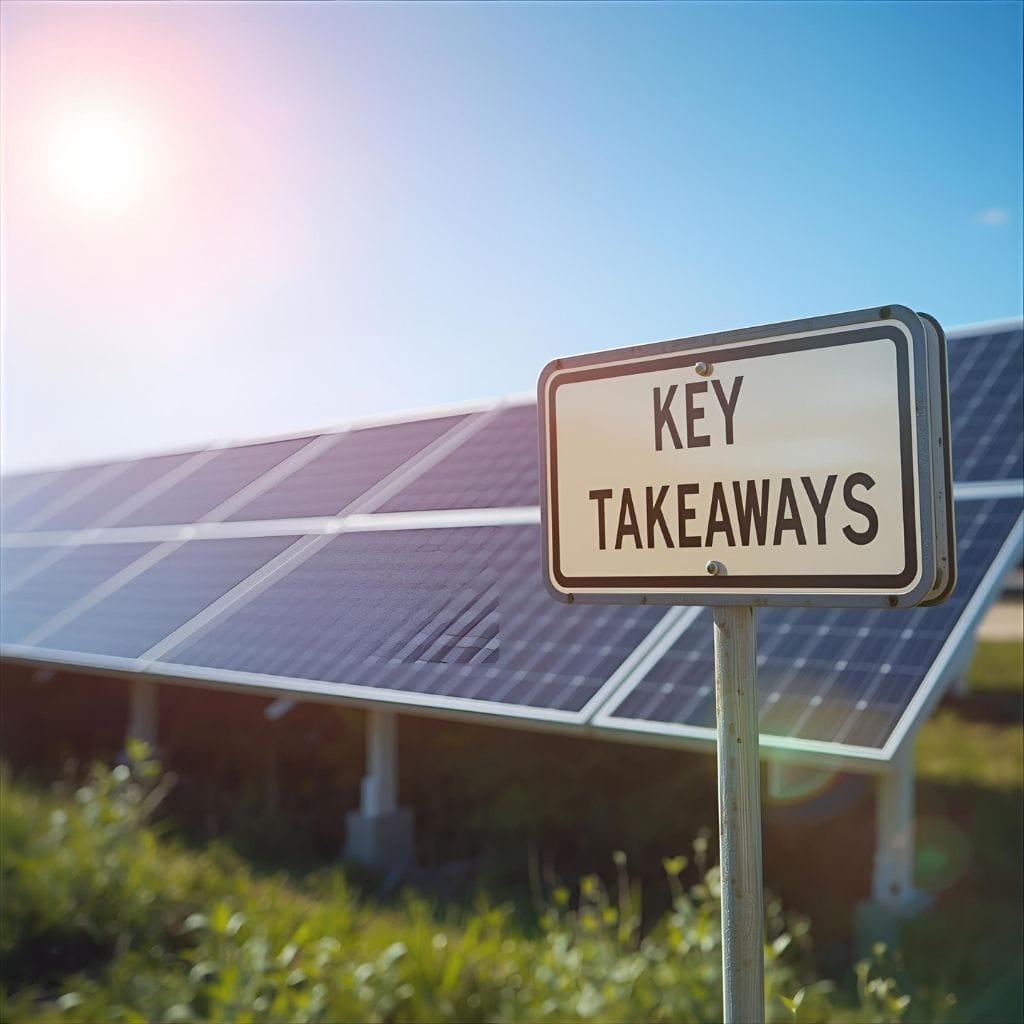
- Which solar panel type is best? → Monocrystalline for efficiency, polycrystalline for budget, thin-film for special cases.
- Thin film vs crystalline solar panels? → Crystalline leads in output, thin-film wins in flexibility and cost.
- Consider your roof space, climate, and budget before making a choice.
To learn how solar panels work, check out our related blog post.

Solar Energy Enthusiast & Renewable Energy Researcher
Vural’s journey into solar energy began four years ago, driven by frequent power outages and high electricity bills at his own home. He has since gained hands-on experience with both personal and commercial solar projects. At solarpanelresource.com, Vural shares his real-world insights and in-depth research to guide homeowners and business owners on their own path to energy independence.
